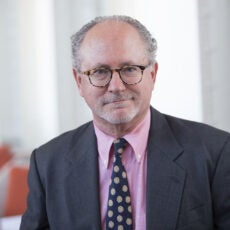
One Future, One Vote
The future needs a stronger constituency and younger voters are the solution.
A version of this blog appeared as an op-ed on the Philadelphia Inquirer.
Human beings have a myopic tendency to sacrifice future gain for present greed. In a century of rising affluence around the world, this tendency threatens our species and the Planet on which we rely.
This myopia is playing out like Greek tragedy in the guise of climate change. In the United States, we seem unable to make a stable commitment to confronting a climate change future. While an increasing majority of Americans report an acceptance of the relevant science and a desire for government to act, there is little evidence of sufficient behavioral or policy change on the existential challenges.
Without changing anything about current debates over how to achieve our goals (and we have many raging debates over many competing goals), is there any single action we could take that would improve our ability to take the future into account?
I offer one simple rule change: we should weight every vote by the voter’s remaining life expectancy. Such a move would align power over decisions with the decider’s expected number of years living with the consequences of those decisions. How would it work?
National average life expectancy would be calculated for every birth year. The longer the remaining life expectancy, the more weight voters would have. Every voter in the same birth year would have an equally weighted voted. And birth years with longer remaining life expectancy would have more weighted votes than birth years with shorter remaining life expectancy. Because everyone with the same remaining life expectancy would have the same weight to their vote, the principle here could be called “one future, one vote.”
On average women live longer than men, as do whites than blacks. And yes, if the weighted voting was based solely on birth year, with no adjustments for sex or race or anything else, then voters from groups with lower than average life expectancies (men, blacks, the poor) would get a higher weighting relative to voters of the same age from groups with higher than average life expectancies (women, whites, the rich). Since the former groups currently vote at lower rates, the rule might actually help overcome existing inequalities by increasing incentives for these groups to vote.
Note that a voter’s first vote would always be their most impactful, which might create positive incentives for both learning and voting. The diminishing impact of a voter’s vote over time would create a sense of scarcity and an expected boost in the voter’s participation in the present. And because this would be as true for a 20-year-old voter as it would for a 40-year-old voter, the rule might lead to universal increase in voting over time with a resulting increase in the impact of wisdom from experience.
It is well understood that all humans, no matter their age, have a strong tendency to over-value the present compared to the future. This bias, probably more than any other single reason, is why we are doomed on climate change. Sure, greed and power and distraction and complexity make climate policy difficult. But perhaps the single biggest obstacle on our path to averting extinction is that the future has too weak a constituency.
We humans are not likely to overcome our biases, but we can build a stronger constituency by designing a democratic process that privileges the votes of those expected to spend the most time in the future.
Support for this voting proposal rests on maximizing the influence of the future on present decisions. And it’s hard to conceive of any other challenge more reliant on present decisions than climate change.
Mark Alan Hughes
Director EmeritusMark Alan Hughes is director emeritus of the Kleinman Center. During his time as faculty director, he led the Center and wrote on topics ranging from deep decarbonization to the future of Philadelphia’s energy landscape.

